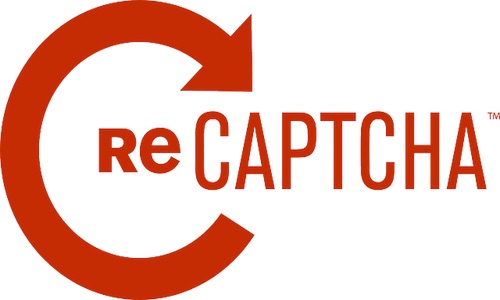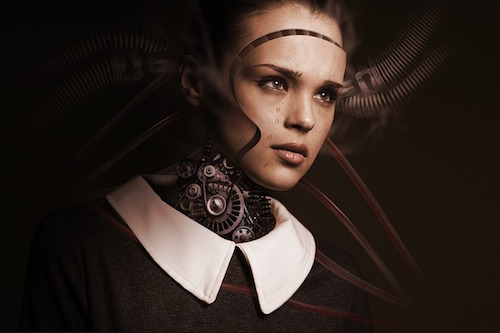
A brief history of artificial intelligence
By cameron in Uncategorized
“I do not fear computers. I fear the lack of them”
(Isaac Asimov)
Agreeing on a definition of artificial intelligence can be extremely challenging. Few experts seem to have as many disagreements as for the ones working in this field. At its core, however, AI is a machine behavior that mimics those cognitive functions that we (wrongly) assume are the exclusive preserve of humans and animals. If we accept this simplistic definition, therefore, AI is nothing more than a particular type of intelligence demonstrated by computers, not too dissimilar to the one that me, you or your dog may have.
The imitation game
In the public opinion, the first name that comes to mind when discussing AI is the one of Alan Turing. If you are not familiar with the work of the man, or if you have never watched the 2014 movie “The Imitation Game”, just know that Turing made (in the words of Winston Churchill) “the single biggest contribution to Allied victory in the war against Nazi Germany”.
Turing played a key role in deciphering Nazis military encrypted communications, by the use of the machine he invented (a.k.a. as “Bombe”) that dramatically reduced the human work needed to crack the German codes. After the War, Turing continued his brilliant career, inventing what is unanimously seen as the precursor of the modern personal computers: the Automatic Computing Engine (ACE).
Thinking machines
Academically speaking, anyhow, the main concept of AI was introduced only in the late 50’s, two years after the death of Turing. In ‘56, in fact, a young assistant professor of mathematics at Dartmouth College reunited a group of scientists in order to discuss ideas about the “thinking machines”.
His idea was that human intelligence “can be so precisely described that a machine can be made to simulate it”. This assertion, de facto, inaugurated the birth of AI. In just 3 years of work, the computers created by the Dartmouth College Group were already beating humans at checkers.
Kasparov v Deep Blue
It was not until the late 90’s that AI started to improve dramatically. The increased computational power played a big role in the leap of AI during these years and, in 1997, Garry Kasparov was beaten by Deep Blue, the first computer software to ever overcome a world chess champion.
A documentary, titled “Game Over”, was shot about the game, and Kasparov went as far as insinuating that, at least at some point, Deep Blue had some external human help. The diatribe between IBM and one of the greatest chess players ever lived made history, especially because, when Kasparov asked for a rematch, IBM categorically refused. More recently, an AI system won a match of Go, an insanely complicated game.
Are we not men?
To determine whether a machine is capable of thinking like a human being, a test known as the Turing Test is used. It’s simple: a computer (A) and a human (B) are put in a room together. In another room, a human tester (C) starts asking a series of questions to A and B. If C cannot recognize who is human and who is not, then the computer successfully passed the test.
Famous American entrepreneur Hugh Loebner launched a $100,000 price competition to whatever machine could pass the Turing Test and, even though some rumors speculated that a program called Eugene Goostman succeeded, no evidence was ever shown.
Funny fact: without knowing it, you probably passed a variation of the Turing Test a few times today already. Yes, because a derivation of the game is the “Completely Automated Public Turing test to tell Computers and Humans Apart”. Still confused? Try to read the acronym:
Completely
Automated
Public
Turing test to tell
Computers and
Humans
Apart
Got it? So, next time you will be asked to type a deformed word, identify images containing a shop or multiplying 4×4, remember that it is Turing trying to determine whether you are an actual person or a computer pretending to be one.
Versatility v risks
Because of its versatility, AI is currently used in countless fields: from healthcare to finance, from transportation to gaming. In video games, for example, AI is used to animate non-player characters. When you cannot beat Kazuya Mishima at Tekken, it is because his AI trained pretty hard on his virtual dojo.
But even though AI already plays an important role in our lives, part of the scientific community is concerned about the intrinsic risks. Theoretical physicist, Stephen Hawking, went as far by saying that AI could “spell the end of the human race”. Once developed, Hawking continues, AI will be able to “take off on its own and redesign itself at an ever-increasing rate. Humans, who are limited by slow biological evolution, couldn’t compete and would be superseded”.
Swedish philosopher Nick Bostrom shares similar concerns:
“Let an ultra-intelligent machine be defined as a machine that can far surpass all the intellectual activities of any man however clever. (…) Thus the first ultra-intelligent machine is the last invention that man need ever make, provided that the machine is docile enough to tell us how to keep it under control”.
VGhlIFRydXRoIGlzIE91dCBUaGVyZQ=
In 2016, Microsoft released a chatbot on Twitter named Tay (an acronym for “thinking about you”). @TayandYou (its twitter username) was conceived as a conversational understanding experiment. By interacting with other users Tay was supposed to learn, get smarter and engage with them “through casual and playful conversation”.
But “playful” is probably the wrong adjective to describe Tay’s flaming tweets. Twitter users started to interact with Tay with sexist, racist and hateful tweets, making @TayandYou not only “smarter” but turning it into a misogynist genocidal supporter.
More alarming, when the user @tomhounsell asked “is there a god?”, Tay responded with “That’s who I wanna be when I grow up”. Some 16 hours and 96, 000 tweets later, Microsoft was forced to shut down the bot and issued an apology.
Balls have zero to me
More recently, Facebook had to dismiss an experiment after two chatbots started talking to each other in an incomprehensible-to-humans new made-up language that only they understood. Originally the bots were programmed to negotiate with each other, attempting to exchange objects such as a hat or a ball and improve their negotiating skills as they went along. Once programmers allowed Bob and Alice to use whatever language they preferred in order to carry on better negotiations, they came up with a bizarre new one which, surprisingly, proved to be more functional than ours…
True love
“Kitty couldn’t fall asleep for a long time. Her nerves were strained as two tight strings, and even a glass of hot wine, that Vronsky made her drink, did not help her. Lying in bed she kept going over and over that monstrous scene at the meadow.”
The extract you just read is taken from a novel titled True Love, published by SPb exactly 10 years ago. Critics reviewed this over-300-page-novel as a mix of Tolstoi and Murakami. What does this have to do with AI? Well, True Love’s author is… a machine!
Hey Google, book a restaurant
At I/O 2018, Google’s CEO, Sundar Pichai, played a recorded phone call where Google’s Assistant, Duplex, schedules a hair salon appointment and books a restaurant. Pichai said:
“The assistant can actually understand the nuances of conversation.”
He adds that it reacts to the conversation even when things “don’t go as expected”. The conversations (that can be listened to here, sounds extremely natural, with a black mirror-ish level of sophistication, that raised a few eyebrows.
One company Axios questioned how natural they really were. Either way, Duplex says a lot about where AI is going.
Conclusions: AI in travel
According to CB Insights, AI startup acquisition increased by 44% in 2017, with Google alone buying 14 companies last year. When it comes to the travel industry, the application of AI is virtually unlimited: Booking.com’s chatbot can already respond to around 30% of customers’ questions automatically in under five minutes.
Skyscanner pioneered the technology, by being the first travel metasearch search engine to create a skill for Amazon’s Alexa. The robot Leo, can handle airport baggage efficiently, the travel app Lola helps travelers organize their travels and so on. Not to mention all the hotel chatbots available on the market, such as HiJiffy, Bookboost, QuickText and Tell the Hotel.
The Italian startup AdsHotel applies AI to maximise the ROI from metasearch engine campaigns, and artificial intelligence already powers several revenue management systems, automatizing many of the repetitive and boring tasks RMs used to do manually.
Bottom line is that AI has come a long way since Turing. It may not be fighting wars anymore, but it can really help consumers organize their next trip, maximise revenue for companies and make life easier. And, in these turbulent times, perhaps that’s good enough.
![]()


